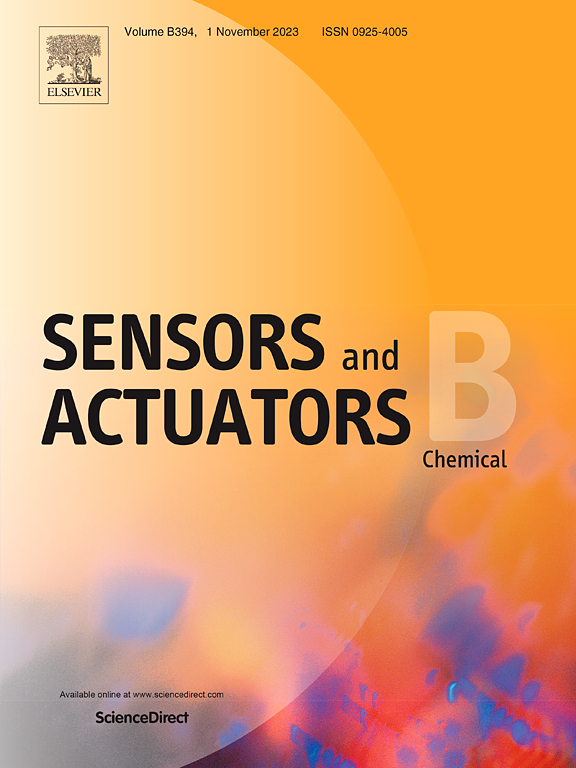Interfacial oxygen vacancy engineering in TiO2 nanowire/WO3-x nanosheet heterostructures for enhanced photoelectrochemical chemical oxygen demand measurement
IF 3.7
1区 化学
Q1 CHEMISTRY, ANALYTICAL
引用次数: 0
Abstract
The development of high-performance photoelectrochemical (PEC) sensors for chemical oxygen demand (COD) monitoring represents a critical advancement in water quality assessment technology. This study presents a novel TiO2 nanowire/WO3-x nanosheet (TiO2/WO3-x) composite photoanode fabricated through an in-situ hydrothermal approach, demonstrating exceptional PEC properties for COD measurement. Strategic introduction of interfacial oxygen vacancies at the heterojunction significantly enhances charge carrier separation and transport efficiency, resulting in a remarkable improvement in photocurrent response. The unique hierarchical architecture, combining TiO2 nanowires with WO3-x nanosheets, not only provides an abundance of catalytic active sites but also enhances the efficient oxidation of organic pollutants. The optimized sensor exhibits superior analytical performance, including a wide linear measurement range (1.125–480 mg/L) and an impressive detection limit of 0.72 mg/L. Comprehensive evaluation reveals excellent anti-interference capability against common inorganic ions (Cl-, NO3-, K+) and remarkable operational stability over extended periods (>30 days). Practical application in real water sample analysis demonstrates high reproducibility (RSD < 8 %) and accuracy (relative error: 2.72–7.12 %). This work introduces a new paradigm for defect engineering in PEC sensors, providing a robust solution for real-time, in-situ COD monitoring in various aquatic environments.

二氧化钛纳米线/WO3-x纳米片异质结构界面氧空位工程用于增强光电化学需氧量测量
用于化学需氧量(COD)监测的高性能光电化学传感器的开发是水质评价技术的重要进展。本研究提出了一种通过原位水热方法制备的新型TiO2纳米线/WO3-x纳米片(TiO2/WO3-x)复合光阳极,具有优异的PEC性能,可用于COD测量。在异质结处引入界面氧空位可以显著提高载流子分离和输运效率,从而显著改善光电流响应。将TiO2纳米线与WO3-x纳米片结合在一起的独特层次结构不仅提供了丰富的催化活性位点,而且提高了有机污染物的有效氧化。优化后的传感器具有优异的分析性能,包括宽的线性测量范围(1.125-480 mg/L)和令人印象深刻的0.72 mg/L检出限。综合评价表明,对常见无机离子(Cl-, NO3-, K+)具有优异的抗干扰能力,并且在较长时间(30天)内具有显著的运行稳定性。在实际水样分析中的实际应用显示出较高的重现性(RSD <;精确度(相对误差:2.72 ~ 7.12 %)。这项工作为PEC传感器的缺陷工程引入了一个新的范例,为各种水生环境中的实时、原位COD监测提供了一个强大的解决方案。
本文章由计算机程序翻译,如有差异,请以英文原文为准。
求助全文
约1分钟内获得全文
求助全文
来源期刊

Sensors and Actuators B: Chemical
工程技术-电化学
CiteScore
14.60
自引率
11.90%
发文量
1776
审稿时长
3.2 months
期刊介绍:
Sensors & Actuators, B: Chemical is an international journal focused on the research and development of chemical transducers. It covers chemical sensors and biosensors, chemical actuators, and analytical microsystems. The journal is interdisciplinary, aiming to publish original works showcasing substantial advancements beyond the current state of the art in these fields, with practical applicability to solving meaningful analytical problems. Review articles are accepted by invitation from an Editor of the journal.
 求助内容:
求助内容: 应助结果提醒方式:
应助结果提醒方式:


